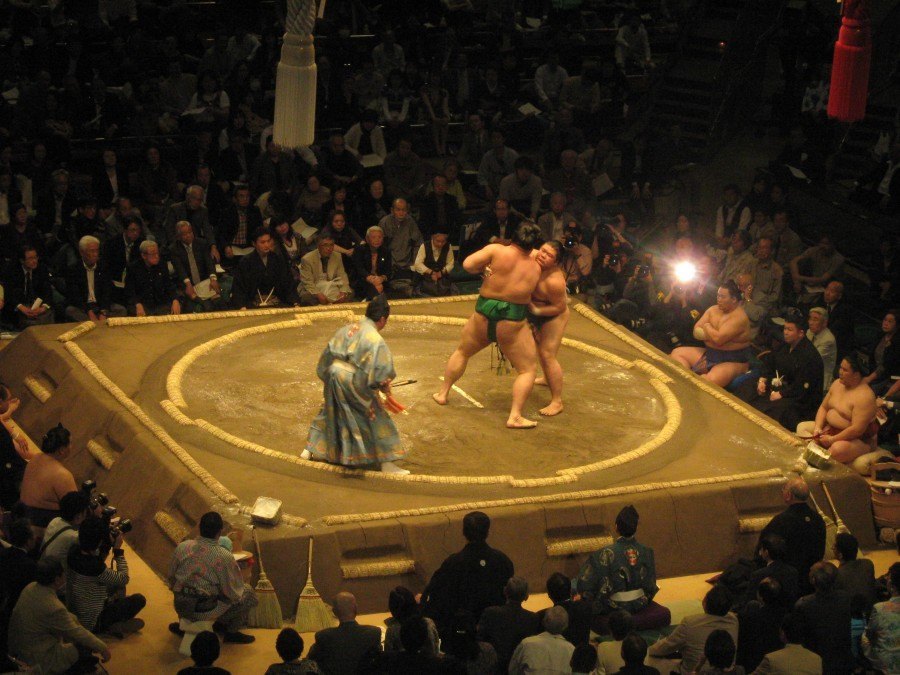Like this post? Help us by sharing it!
There has been a lot of controversy surrounding the traditional sport of Sumo of late. There was match fixing involving players and officials which led to the extreme measure of cancelling the Spring bassho (tournament) in Osaka. These have been dark days for the Nihon Sumo Kyokai and the ancient sport synonymous with Japan and its culture. Revelations continued to flow from the Japanese newspapers and it was decided not to run the Tokyo tournament in May, but they would take the step of running a free technical exhibition at the Kokugikan sumo stadium to get the name of sumo back in headlines for the right reasons. Duncan Metcalfe recently travelled to Japan (May 8th-20th 2011) and didn’t need much persuading when it came to seeing the sumo in Tokyo. In his own words, here is what this sumo first timer thought.
When Natasha at IJT mentioned that my stay in Tokyo coincided with a Sumo tournament I jumped at the chance to go. To be honest I knew next to nothing about the sport, except that it involved one very large man trying to push another out of a ring! I was to finish the day there realising that as well as strength and weight strength there is a huge amount of technique and skill involved, and that the sport has as many elements of tradition and ritual as it does action.
My first impression was the striking appearance of the stadium interior. The ring (dohyo) sits beneath a canopy replicating that of a Shinto shrine – in fact Sumo originated as a religious ritual. After trying and failing to find my seat on my own I was shown directly to it by one of the traditionally clad stewards and found I had a great view, right at the front of the upper level of seating.
Before each bout a short ceremony took place with the wrestlers or rikishi, representing East and West divisions respectively, entering the ring, scattering salt about to purify it, balancing on one leg then the other and also generally glowering at each other! Other ceremonies announced the entry of the next group of rikishi, the day beginning with amateur matches in the morning and finishing with the elite makuuchi in the early evening. The wrestlers’ rank is marked by the ceremonial apron they wear to enter the ring.
The bouts themselves were short, often lasting just ten seconds or so, but full of action. A rikishi loses when he steps out of the ring or touches the ground with anything but his feet; the two wrestlers face off, crouch, then clash together with a noise that fills the stadium. The ringside seats must be fantastic but not always the safest places to sit when a rikishi is pushed or thrown from the ring! Some bouts last longer with the wrestlers struggling to gain an advantage, and then with a sudden move, a step, a throw, the match is over. The strength and skill on display were incredible.
The day was a fantastic experience, completely unlike any sporting event I’ve been to before. Looking around the stadium at one point I realised that I was the only westerner there (and in fact noticed a Japanese man a few seats away taking a photo of me, I guess I did stand out in the crowd a little!), and yet was treated with the hospitality that I was to find so typical in the rest of my trip to Japan. Sumo has found itself a new fan!‘
Duncan Metcalfe
It is great to hear that the July bassho in Nagoya (July 10th-24th) has got the go ahead from the officials and that NHK are resuming live coverage to build the great sport back up to its former glory. A day at the sumo is a fantastic cultural experience and an enjoyable day out whether you are interested in the sport or not.





